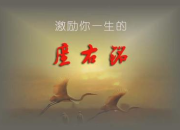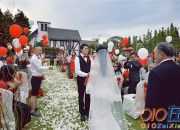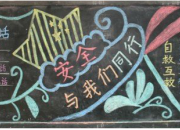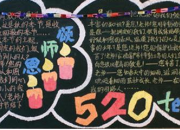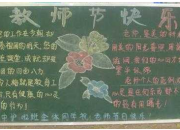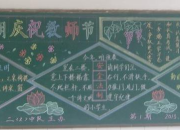《Unit 10 Where did you go on vacatio
时间:2021-08-31Language goal
In this unit students learn to talk about past events.
New language
Where did you go on vacation? I went to the mountains.
Where did they go on vacation? They went to New York.
Where did he go on vacation? He stayed at home.
Where did she go on vacation? She visited her uncle.
Did you go to the beach? Yes, I did. /No, I didn't.
Section A
Ask questions about what students did last Saturday.Write some past tense statements on the board. Ask,Who went to the movies last Saturday? Point to a student who raises his or her hand. Sara went to the movies last Saturday. Repeat. Write this sentence on the board.Underline the word went. Ask, Who visited a friend last
Saturday? Point to a student who raises his or her hand.Carlos visited a friend last Saturday. Repeat. Write this"sentence on the board. Underline the word visited.
Point to the words went and visited in the sentences on the board. Say, We use these words to talk about things that happened in the past.
Then write these pairs of words on the board: go-went,visit-visited. Ask a student to point out the words that talk about the past.
1 a This activity introduces the key vocabulary.
Focus attention on the picture. Ask students to tell what they see. Say, Each picture shows something a person did in the past. Name each activity and ask students to repeat:went to the mountains, went to New York City, went to summer camp, visited my uncle, stayed at home, went to the beach, and visited museums.
Point out the numbered list of activities. Say each one again and ask students to repeat.
Then ask students to match each phrase with one of the pictures. Say, Write the letter of each picture next to the name of the activity. Point out the sample answer.
Check the answers.
1 b This activity gives students practice in understanding the target language in spoken conversation.
Point to the picture. Ask students to tell what the person did in each scene. For example, Tina went to the mountains or She went to the mountains.
Play the recording the first time. Students only listen.
Play the recording a second time. This time say, There are three conversations. The people talk about what they did on vacation. Listen to the recording and write numbers of the names in the white boxes in the picture. Please write only five numbers. Point out the sample answer next to the picture showing went to the mountains.
Correct the answers.
1 C This activity provides guided oral practice using the target language.
Point out the example conversation. Ask two students to read the dialogue to the class.
Say, Now work with a partner. Make your own conversations about the pictures.
Say the dialogue in the picture with a student. Do a second example, if you wish.
Then have students work in pairs. As they talk, move around the room monitoring their work.
Offer language or pronunciation support as needed.
2a This activity gives students practice in understanding the key vocabulary in spoken conversation.
Point to the three people's names and read the names to the class. Point to the three vacation activities and ask a student to read the activities to the class.
Say, This is a recording about three people's vacations. Please match the people with the places they went to on vacation.
Play the recording the first time. Students only listen.
Play the recording a second time. This time, ask students to write the letters of where people went on vacation next to their names. Point out the sample answer next to item 1.
Correct the answers.
2b This activity provides more listening practice using the target language.
Call attention to the chart. Ask a student to read through the names and activities listed.
Say, Now listen to the recording again. This time,please listen to the conversations and put a checkmark in the "Yes, I did." or "No, I didn't." blank after each activity. |Play the recording the first time. Students only listen.
Point out the sample answer under Yes, I did in the first blank after the words "Nancy... go to Central Park?" Say, Did Nancy go to Central Park? Yes, she did.
Play the recording again. Ask students to put checkmarifl in the correct blanks.
2c This activity provides guided oral practice using the target language.
Say, Get into groups of three. One of you will be Nancy, one will be Kevin, and one will be Julie. Ask each other about the vacations. You can talk about the activitiesfrom the chart in 2b or about any other activities you like.
As students talk, move around the room, monitoring the conversations and offering support as needed.
You may want to have a group of students present their conversation to the class.
3a This activity provides reading and writing practice using the target language.
Point out the pictures in the photo album. Ask students to describe what they see. (In picture 1 there is a man with a bowl of soup. There is also a waiter. He looks angry. In picture 2 there is a beautiful beach. There is a man. He looks unhappy.)
After that, read the first two lines of the dialogue to the class. Point out the answer was in the first line.
Then point out the blanks in the rest of the lines of the dialogue. Read the conversation to the class saying the word blank for each blank line: How blank the beaches?
Then say, Write the word was or were in each blank.Ask students to complete the activity on their own.
Correct the answers.
3b This activity provides guided oral practice using the target language.
Point to each of the pictures and ask students to say what they see. Then read the words under each picture. Pronounce any new words and explain what they mean, if necessary. For example, In this picture a girl is on a bus. The girl is taking a bus trip. Ask, What does relaxing mean? Does it mean you are excited or quiet? How do you look when you relax? If students don't know the meaning of relaxing, demonstrate by leaning back in your seat and half-closing your eyes.
Say,Now work with a partner. Make your own conversations about the pictures.
Say a dialogue with a student. Point to the food picture.Ask, How was the food? The student replies, It was awful.Do a second example, if you wish.
Then have students work in pairs. As they talk, move around the room monitoring their work. Offer language or pronunciation support as needed.
4. This activity provides speaking practice using the target
language.
Explain to the students that they are going to make a vacation photo album and talk about it with their classmates. You may want to provide students with magazines which they can cut up for their photo albums, or askthem to draw the photos or have them make their photo albums at home for homework.
Once students have completed their photo albums, draw students' attention to the vacation pictures in the student book. Tell them that they are pictures from your last vacation. Using the simple past tense, point to each picture and describe a few things about your time in each place. Write wh- questions on the board (where,
what, who, why, when, how). Remind students that the photos in the book in activity 4 are photos from your vacation. Encourage the class to ask you wh- questions about your vacation.
Have students interview their classmates about their vacation photo albums.
When students have interviewed several classmates,have them discuss in pairs where in China they think would be the best place for a vacation. It could be somewhere one of them has been to, or just somewhere they have heard of and would like to visit.
Have several pairs explain their choices of vacation destination to the rest of the class.
【《Unit 10 Where did you go on vacation》教案】相关文章:
1.Where did you go on vacation课件
2.初中英语Where did you go on vacation的教案
4.初中英语《Where did you go on vacation》练习题
5.Unit 1 Where are you going to go教学反思
6.六年级下册英语课件:Unit3 Where did you go?


